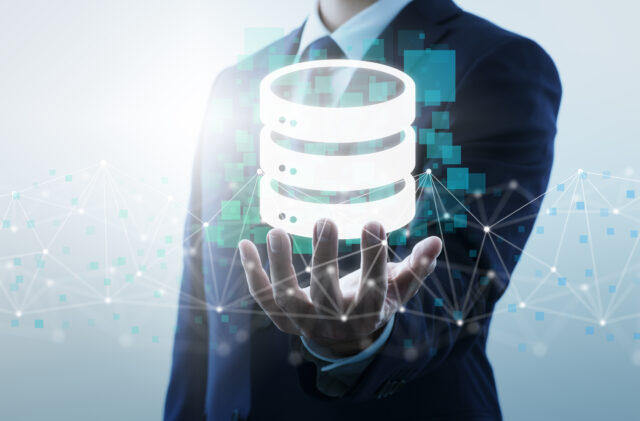Insights

Demystifying data migrations: Understanding the lift and shift
Data migrations can be incredibly complex, but also beneficial from a business standpoint. I recently wrote an article, Choosing the right data migration strategy, that introduces the four most common types of data migrations, including the lift and shift, the data lake, a combination of lift and shift and data lake, and finally, hybrid streaming.
Many factors play into choosing a data migration strategy including data architecture, applications, business needs, and other drivers. Today, I want to dive into the most basic of these strategies: the lift and shift data migration.
Understanding the lift and shift data migration
To recap, the lift-and-shift involves moving applications, data, and other operational solutions used on-premises and simply transferring them to the cloud, without redesigning or changing the workload. The final result ideally looks and behaves similar to the on-premises database workload.
In fact, the lift and shift approach is the original data migration strategy, dating back to when fewer cloud solutions were available. Now, of course, organizations can choose from many cloud-based, serverless solutions to optimize cost while simultaneously improving performance. Platform advancements and new products continue to simplify and accelerate data migration projects.
The lift and shift has several advantages
The lift and shift is the fastest way to move an on-premises database onto public cloud resources because you don’t need to spend time on optimization or code revisions. It’s also the cheapest migration model since you aren’t paying for code or configuration changes. However, these upfront savings can also cost more in the long run if you miss opportunities to optimize workload costs.
From a planning standpoint, it requires the least amount of project resources. In select situations, this strategy can be less risky than refactoring an app. This is especially true if you don’t have the resources to perform code updates without compromising performance.
Finally, sometimes, optimization is just too costly with existing resources. Lift and shift can allow companies to prolong the lifespan of a struggling workload.
The lift and shift also has a few disadvantages
As with most things, the lift and shift also has some drawbacks that must be considered. For example, organizations that forego the opportunity to first optimize code and configurations or refactor workloads for the cloud can miss out on long-term cost savings and some of the benefits a cloud infrastructure has to offer, such as improved performance, automation, and stability. Additionally, the technical debt incurred on-premises will migrate to the cloud.
The cloud can provide a single way to manage and scale the full scope of your infrastructure using repeatable processes, especially if you use migration as an opportunity to understand existing applications and data. However, lifting and shifting an on-premises database without a full assessment can worsen visibility issues and cause cloud troubleshooting challenges.
From a process standpoint, confusing a lift-and-shift data migration model with a copy-and-paste strategy is a disaster recipe for companies that put no effort towards planning or migration testing before trying to go live. Finally, the cloud can simplify or complicate optimization problems. Sometimes, it’s much harder to optimize a legacy workload without native environment resources.
The variations of the lift and shift approach
While the lift and shift is the most basic strategy, organizations can opt for multiple variations depending upon their needs and challenges. Choosing the right strategy involves an understanding of the environment, workloads, timelines, and leadership goals, among many other factors. Here are a few:
- Pure lift and shift: Migrating a workload with no refactoring or rebuilding—also referred to as “rehosting.”
- Lift, shift, & optimize: A migration that involves minimal efforts to optimize a workload, generally post-migration.
- Refactoring: Significant changes to configurations or code during a cloud migration to enhance performance or behavior.
- Containerization: Bundling individual app components, such as libraries and dependencies, into containers separate from the infrastructure to promote flexible migrations between premises and cloud environments.
- Rebuild: Completely redesigning a cloud-native application in cases where, for example, a license has expired or an application is no longer supported.
Is it the right strategy for your data migration?
It depends. Migration teams with the support of business leaders must ultimately decide if the lift and shift is the right strategy. It’s critical to conduct a full cloud assessment to understand:
- Timeline, business goals, and challenges
- Strategies for migrating workloads
- Pre-migration or post-migration optimization work
- Cloud adoption readiness across your business
- Risks of optimizing and refactoring
- Costs and licensing
- Expected performance
- Poor bandwidth may pose migration challenges and lead to performance issues later on
- Post-migration data transfer costs
Sometimes, lift and shift is the only option, as in the case of our automotive manufacturing customer, whose existing data center was closing. For them, moving their portfolio of business-critical applications to another facility was not cost-effective. Instead, Beyondsoft proposed a lift and shift to Amazon Web Services (AWS), enabling them to forgo expensive hardware and licensing costs while enjoying the benefits of the cloud. The move to the cloud also positioned our customer to refactor their vehicle configuration service to leverage the full capabilities of AWS.
A cloud assessment from Beyondsoft can help you determine the best migration strategy for your needs and challenges. Our certified practitioners have performed hundreds of data and application migrations for enterprise customers and can help you create a roadmap to achieve your data migration goals. To learn more, contact us today.

How we do it
Our success factors over the years are a testament to driving your return on investment. Singapore is our global head office and we have 15 regional offices around the world.

Three decades of strong IT consulting and services

Global presence across four continents

Certifications* in CMMI 5, ISO 9001, ISO 45001, and ISO 27001

>30,000 global experts

Microsoft Azure Expert MSP
ISO 9001 and 45001 (certificates issued to Beyondsoft International (Singapore) Pte Ltd). ISO 27001 (certificates issued to Beyondsoft International (Singapore) Pte Ltd, Beyondsoft (Malaysia) Sdn. Bhd., and Beyondsoft Consulting Inc., Bellevue, WA, USA)
